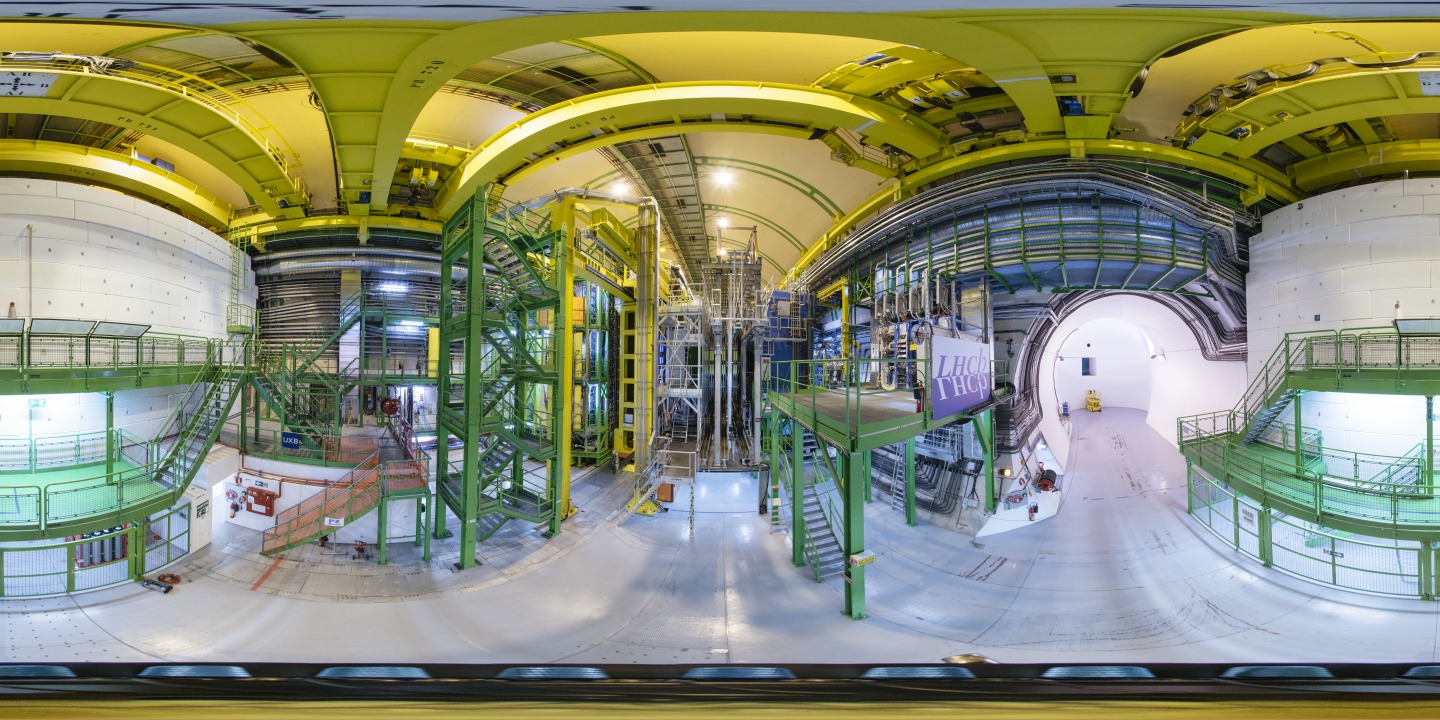Media release
From:
Springer Nature
Particle physics: Elusive matter–antimatter asymmetry observed at CERN
The first-known observations of matter–antimatter asymmetry in a decaying composite subatomic particle that belongs to the baryon class are reported from the LHCb experiment located at the Large Hadron Collider at CERN. This effect, known as charge–parity (CP) violation, has been theoretically predicted, but hitherto escaped observation in baryons. The experimental verification of this asymmetry violation in baryons, published in Nature this week, is important as baryons make up most of the matter in the observable Universe.
Cosmological models suggest that matter and antimatter were created in equal amounts at the Big Bang, but in the present-day Universe matter seems to dominate antimatter. This imbalance is thought to be driven by differences in the behaviour of matter and antimatter: a violation of symmetry known as CP violation. This effect has been predicted by the Standard Model of physics and observed experimentally in subatomic particles called mesons more than 60 years ago, but never previously observed in baryons. As opposed to mesons, which are formed by two quarks, baryons are formed by three quarks — particles that make up most of matter such as neutrons and protons are baryons.
Xueting Yang and colleagues of the LHCb experiment present the first observation of CP violation in baryon decays, using data collected from proton–proton collisions at the LHC. The CP asymmetry reveals a difference in behaviour between baryonic matter and antimatter. While such a violation was predicted and does not resolve the Big Bang matter–antimatter imbalance, finding out the details of this violation experimentally will offer important clues, opening up opportunities for further theoretical and experimental studies of the nature of CP violation. These findings potentially pave the way to search for physics beyond the Standard Model, the authors conclude.
Attachments
Note: Not all attachments are visible to the general public.
Research URLs will go live after the embargo ends.

Research
Springer Nature, Web page
Please link to the article in online versions of your report (the URL will go live after the embargo ends).
Journal/
conference:
Nature
Organisation/s:
Monash University, LHCb Collaboration, INFN Sezione di Genova, Italy
Funder:
We acknowledge support from CERN and from
the national agencies: ARC (Australia); CAPES, CNPq, FAPERJ and FINEP (Brazil); MOST and
NSFC (China); CNRS/IN2P3 (France); BMBF, DFG and MPG (Germany); INFN (Italy); NWO
(Netherlands); MNiSW and NCN (Poland); MCID/IFA (Romania); MICIU and AEI (Spain); SNSF
and SER (Switzerland); NASU (Ukraine); STFC (United Kingdom); and DOE NP and NSF (USA).
We acknowledge the computing resources provided by ARDC (Australia); CBPF (Brazil);
CERN, IHEP and LZU (China); IN2P3 (France); KIT and DESY (Germany); INFN (Italy); SURF
(Netherlands); Polish WLCG (Poland); IFIN-HH (Romania); PIC (Spain); CSCS (Switzerland);
and GridPP (United Kingdom). We are indebted to the communities behind the various
open-source software packages on which we depend. Individual groups or members have
received support from Key Research Program of Frontier Sciences of CAS, CAS PIFI, CAS
CCEPP, Fundamental Research Funds for the Central Universities and Sci. & Tech. Program of
Guangzhou (China); Minciencias (Colombia); EPLANET, Marie Skłodowska-Curie Actions, ERC
and NextGenerationEU (European Union); A*MIDEX, ANR, IPhU and Labex P2IO, and Région
Auvergne-Rhône-Alpes (France); Alexander-von-Humboldt Foundation (Germany); ICSC
(Italy); Severo Ochoa and María de Maeztu Units of Excellence, GVA, XuntaGal, GENCAT,
InTalent-Inditex and Prog. Atracción Talento CM (Spain); SRC (Sweden); and the Leverhulme
Trust, the Royal Society and UKRI (United Kingdom). Unaffiliated authors are affiliated with
an institute formerly covered by a cooperation agreement with CERN.



 Australia; International; VIC
Australia; International; VIC



